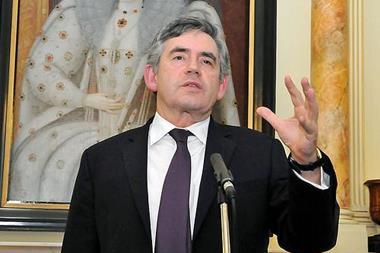When communicating risk companies need to avoid confusing the public because they are prone to overreact
Public reactions to threats and dangers are based on the complex interplay of psychological and cultural influences. Sometimes these collective emotions can be totally irrational and bear little resemblance to actual threats. What this means is that, to be successful, risk communication with the public needs to be clear, consistent and easy to understand.
Communicating risk is important in the broadest sense to protect society from overreacting to perceived dangers, which can in the worst case lead to lives being unnecessarily lost. From a business perspective it is also vital to communicate risk to the public in the right way. If a products safety is compromised—such as the Mattel incident last year where children’s toys were contaminated with dangerous lead paint—it is essential to accurately and reliably communicate the level of risk to the public. If the company under plays the incident it is in danger of hampering a recall effort, increasing risk to the public and damaging its own reputation, if it overplays the risk it will have trouble winning over the publics trust ever again.
There are plenty of factors which influence the public’s perception of risk.
One problem is the subconscious mind uses linkages to derive meaning from the wider world. Most of the time this works very well and allows humans to quickly process information. Sometimes, however, it can trick the conscious mind and lead to dangerous assumptions. For example the British aversion to nuclear power is probably tainted by a faint subconscious association with the Chernobyl disaster and apocalyptic scenarios of nuclear war, rather than a logical evaluation of the real, and minute, risks of contamination or nuclear meltdown.
The media has an important role to play because for most people it shapes the way they think about risk. Unfortunately the media is in the business of selling stories and as a result it is often blamed for inflating them in pursuit of the scariest headline.
“Sensational stories and evocative imagery contribute to the perception of risk.
Sensational stories and evocative imagery contribute to the perception of risk and can lead people to overreact, even when there is plentiful scientific evidence to suggest the risk is not serious. Lots of mothers are now afraid to give their children the triple measles, mumps and rubella (MMR) vaccine after a controversial study linked the jab with autism, despite the fact this link has been conclusively disproved by subsequent studies. The MMR vaccination programme is designed to protect children, but without it the risk of death from these diseases is increased.
Faced with a crisis situation businesses need to develop a clear communications strategy aimed at balancing the public’s perception of risk. In the days of 24-hour news coverage the media can get hold of a news story very quickly so businesses need to act fast if they want to reassure the public. If the business is dealing with a problem that has the potential to harm consumers, such as the recall of a dangerous product, then delivering a clear message is crucial.
One important thing to remember is that logic can falter. When consumers are invited to assess relative risk emotional responses are by far the strongest. It is a mother’s natural instinct to protect her children, which means it is hard to shake off the fear that a vaccine is dangerous even though science and reason prove it is not.
The tendency of the public to come to quick gut decisions and stick with them means if a company wants to get its message across it needs to be easy to understand. The media tends to report statistics as percentages in order to grab people’s attention. But people are instinctively better at understanding the consequence of a specific risk if it is expressed as a frequency—say 1 in a 100 rather than 1% because most people think 1% is more risky.
Postscript
Julia Johnson, senior consultant at Razor PR, explains in depth how to communicate risk with the public in the next issue of StrategicRISK.




















No comments yet